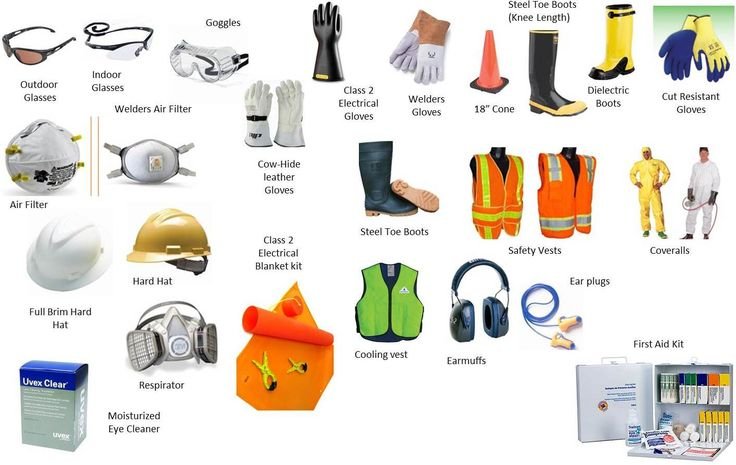Personal Protective Equipment (PPE) is a vital component in safeguarding workers from workplace hazards. It is important for organizational leaders to understand and appreciate the significance of PPE in promoting a safe and healthy work environment. This article outlines the importance of wearing PPE in the workplace.
Firstly, PPE serves as a barrier between the worker and the potential hazards present in the workplace. These hazards can range from chemical exposure to physical injuries from sharp objects. Without proper PPE, workers are left exposed to harmful elements in their environment; exposing them to high risks of accidents, injuries, and illnesses.
The use of PPE should be considered mandatory in work environments where there is a high probability of exposure to harmful substances, such as chemical laboratories, construction sites, manufacturing plants, etc. It should also be noted that, in some work settings, PPE may come in the form of face masks, gloves, protective workwear, helmets, eye goggles, and respirators.

Secondly, PPE serves as a means of legal protection for both the worker and the organization. Wearing PPE ensures that the worker is fulfilling their responsibilities to the employer, and the employer, in turn, is fulfilling the legal requirements mandated by the state.
Employers are required to provide their workers with appropriate PPE, ensure that PPE is in good working condition, and supervise the proper use of PPE. Non-compliance with these requirements can result in legal action and heavy fines.

Thirdly, PPE enhances productivity in the workplace. When workers wear PPE, they feel confident and secure; knowing that they are well-prepared and protected. This confidence can translate into a more productive work environment as workers feel empowered to carry out their duties without any concerns about their safety.
In addition, by protecting workers from potential hazards or injuries, organizations can avoid loss of manpower, loss of time, and damage to equipment. This can be critical for small businesses that run on tight budgets or those that rely on skilled labor to function optimally. It also helps in maintaining a healthy work environment that promotes employee loyalty, satisfaction, and commitment.

Fourthly, PPE enhances the reputation of an organization. Today, consumers are more conscious of how businesses treat their employees and the environment. By demonstrating a commitment to safety, companies can improve their reputation as responsible and ethical organizations in the eyes of their employees, customers, and the general public.
Fifth, using PPE can help organizations reduce the cost of occupational injuries and illnesses. As stated earlier, PPE can protect workers from accidents that would otherwise require medical attention, thus reducing healthcare expenses. Additionally, it can lower the cost of worker compensation claims and potential lawsuits arising as a result of workplace accidents.
Lastly, the use of PPE can promote a culture of safety in the workplace. By wearing PPE, workers demonstrate a personal commitment to safety, which can influence others to follow suit. In turn, this fosters a shared responsibility for safety in the workplace and hones the collective goal of creating a safe work environment.

PPE is a critical component in ensuring the safety and health of workers in the workplace. Organizations must provide and supervise the adequate use of PPE to protect their workers legally, as well as boost productivity and enhance their reputation as ethical and socially responsible entities. The cost savings of preventing workplace injuries and illnesses also serves as a powerful motivator for the importance of PPE. To create a safe working environment, businesses and workers must work cooperatively to promote a culture of safety and injury prevention.


